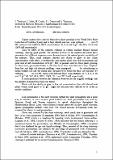Por favor, use este identificador para citar o enlazar a este item:
http://hdl.handle.net/10261/41807COMPARTIR / EXPORTAR:
 SHARE
BASE SHARE
BASE
|
|
| Visualizar otros formatos: MARC | Dublin Core | RDF | ORE | MODS | METS | DIDL | DATACITE | |

| Campo DC | Valor | Lengua/Idioma |
|---|---|---|
| dc.contributor.author | Troncoso Mendoza, Javier | - |
| dc.contributor.author | Liñán Benjumea, Juana | - |
| dc.contributor.author | Cantos, Manuel | - |
| dc.contributor.author | García Fernández, José Luis | - |
| dc.contributor.author | Troncoso de Arce, Antonio | - |
| dc.date.accessioned | 2011-10-27T11:25:42Z | - |
| dc.date.available | 2011-10-27T11:25:42Z | - |
| dc.date.issued | 2011-10-27 | - |
| dc.identifier.citation | Acta Horticulturae 791: 217-223 (2008) | - |
| dc.identifier.isbn | 978-90-66054-47-9 | - |
| dc.identifier.issn | 0567-7572 | - |
| dc.identifier.uri | http://hdl.handle.net/10261/41807 | - |
| dc.description | 7 pages, 6 tables, 30 references.-- V International Symposium on Olive Growing, celebrado del 27 de septiembre-2 de octubre 2004, en Izmir, Turquía. | es_ES |
| dc.description.abstract | Zygotic mature olive embryos from olive plants growing in the World Olive Plant Collection of Cordoba (Spain) and in high salinity marshes, were cultured in vitro on 1/3 MS medium with different NaCl concentrations: 0, 4, 6 and 8 gL-1 (0, 68.4, 102.6 and 136.9 mM respectively). Close to 100% of the embryos cultured in control medium formed normal seedlings, showing good growth. The addition of NaCl to the medium decreased these parameters but different responses were observed due to the natural genetic variability of the embryos. Thus, some embryos showed low ability to grow at low saline concentrations while others, even from the same mother plant, were able to germinate and grow well at salt concentrations of 8 gL-1. But, in general, embryos from plants growing in saline areas, germinated better in salt than those from cultivated olive trees. Explants from low and high salt tolerant seedlings were propagated in vitro by subculturing in media without salt and the clonal lines obtained were tested for their salt tolerance by culturing in vitro on 1/3 MS media with different NaCl concentrations: 0, 2, 4, 6, 8, 10 and 12 gL-1 (0, 34.2, 68.4, 102.6, 136.9, 171.1 and 205.3 mM respectively). A correspondence between the tolerance observed for the original seedlings and the plantlets obtained from them was found. Plants with low ability to grow in low salt concentration (low salt tolerant) and plants which could grow at 12 gL-1 (high salt tolerant) were selected to be tested in outside conditions. | es_ES |
| dc.language.iso | eng | es_ES |
| dc.publisher | International Society for Horticultural Science | - |
| dc.rights | openAccess | es_ES |
| dc.subject | Olive | es_ES |
| dc.subject | Salt tolerance | es_ES |
| dc.subject | In vitro selection | es_ES |
| dc.subject | Embryos | es_ES |
| dc.title | In vitro selection of salt-tolerant olive clones | es_ES |
| dc.type | artículo | es_ES |
| dc.description.peerreviewed | Peer reviewed | es_ES |
| dc.type.coar | http://purl.org/coar/resource_type/c_6501 | es_ES |
| item.fulltext | With Fulltext | - |
| item.languageiso639-1 | en | - |
| item.openairecristype | http://purl.org/coar/resource_type/c_18cf | - |
| item.openairetype | artículo | - |
| item.cerifentitytype | Publications | - |
| item.grantfulltext | open | - |
| Aparece en las colecciones: | (IRNAS) Artículos | |
Ficheros en este ítem:
| Fichero | Descripción | Tamaño | Formato | |
|---|---|---|---|---|
| In vitro selection.pdf | 91,43 kB | Adobe PDF |  Visualizar/Abrir |
CORE Recommender
Page view(s)
292
checked on 23-abr-2024
Download(s)
290
checked on 23-abr-2024
Google ScholarTM
Check
Altmetric
NOTA: Los ítems de Digital.CSIC están protegidos por copyright, con todos los derechos reservados, a menos que se indique lo contrario.
